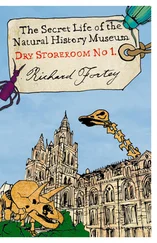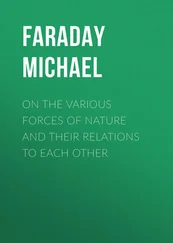It may seem unlikely that beech leaves could contribute to a delicious alcoholic drink, but I have made a liqueur from them for several years, and most of my guests are surprised it is so easy on the tongue. Beech-leaf noyeau can be made in early May when the leaves are freshly unfurled. They are still pale green and soft to the touch – they can be rolled up like cigarette papers. Any tougher and they are bitter. I try to exclude as many of the little brown bracts that originally enclosed the leaf as I can. It takes an unexpectedly long time to pick enough fresh leaves to lightly fill a plastic bag. Once back in the kitchen I stuff a preserving jar quite tightly with the leaves, until it is rather more than half full. Then they are covered with gin (or vodka) until the jar is about three-quarters full. I do not use a high-class brand suffused with many exotic botanicals, but the cheaper stuff from that supermarket shelf marked ‘Youths and Alcoholics Only’. I leave the sealed jar for a month to steep. Then the leaves are removed, allowing all the liquor to drain off. If there are any funny bits floating about, now is the time to remove them. For a whole bottle of gin (700 ml) the next ingredients are 200 grams of sugar, around 200 ml of brandy, and 250 ml of water. After boiling the water to dissolve the sugar the resulting syrup is allowed to cool completely. I then add the syrup and the brandy to the beech-leaf elixir and put the mixture back in the preserving jar, preferably with half a vanilla pod. By Christmastide it should be a lovely golden colour. Only a very cynical person would say that it tastes of brandy and vanilla.
Bats!
Claire Andrews has installed her bat monitors. She strapped the recording devices on to our trees about ten feet off the ground, one on the oak by the clearing, the other on a big beech in a sheltered part of the Dingley Dell. They are painted in camouflage colours, and are inconspicuous once in place. They are like discreet garters hitched up on the legs of the trees. Over the next week or so they will record the ultrasonic echolocation noises used by bats to detect their prey, along with their calls one to another.
When I was young I could hear the ‘squeaks’ of bats, but now I am sadly deaf to such crepuscular cries; yet I have seen dancing, shadowy shapes of bats hunting over our clearing outlined momentarily against a darkening sky, black against indigo. How appropriate is the German word for bat – Fledermaus , ‘flitter mouse’ – which exactly captures these stuttering dashes across the heavens.
It is impossible exactly to identify a species of bat in flight. Our recording machines are attuned to pick up the high-frequency cries of these most elusive mammals. Different species ‘squeak’ at different frequencies and with different cadences, as they locate and home in on their prey, especially moths. They use echoes to build up a map of their surroundings, rather as the sonar system installed in ocean-going vessels is used to visualise the sea floor. Bats are exquisitely attuned to avoid obstacles in their way, so negotiating a contorted flightpath under our trees poses no problem. Some of their prey species (among them noctuid moths, which are common in the wood) have evolved organs adapted to ‘hearing’ their approaching nemesis, and will take evasive action if they detect pursuit, such as dropping rapidly downwards from their flight trajectory. Evolution often works as a kind of arms race, with ever more sophisticated methods of attack provoking ever more subtle lines of defence. We need not wonder at the extraordinary auditory organs of the long-eared bats, bizarre though they might appear. These bats ‘whisper’ with low amplitude and short duration to fool their prey, and they need exceptional hearing from massive ears to detect the tiniest sounds made by insects that they may pick up directly from leaves. By day, all bats hang themselves up like folded umbrellas in secluded roosts. Claire has already spotted several holes in beech trees, and, elsewhere, loose pieces of bark that would afford suitable hideaways. There is nothing to do now except leave the contraptions to do their work.
More than a week later, we feed the digital chips from the recording devices into Claire’s computer. Time is ticked off along a chart that reels out on screen the batty history of the glades as night falls. Here is a series of calls from the main clearing at 8.26 p.m. precisely, registering at 45 kilohertz, following sunset seventeen minutes earlier: they appear on the chart as a succession of reverse ‘J’ shapes, rather like the strokes of an italic pen. ‘The one you’d expect,’ says Claire. ‘Common pipistrelle ( Pipistrellus pipistrellus ).’ At 8.39 another batch of short calls appears showing a rather similar shape, but at a different pitch of 55 kilohertz. ‘That’s the soprano pipistrelle ( Pipistrellus pygmaeus ). It “sings” at a higher frequency.’ Claire tells me that the soprano was only named as a species separate from the common pipistrelle in 1999, which seems extraordinary. How could a British mammal elude recognition for so long? We have known all the others for two centuries. Evidently, the two species are extremely similar small brown bats, although they are now known to have different breeding and feeding strategies. As with a lie detector, their voices gave them away. By artificially tuning down the frequencies on the computer we can ‘hear’ the bat calls for ourselves, and appreciate their different pitches.
At 9.39 a different pattern appears on the screen; it belongs to one of the Myotis bats, which are not possible to discriminate on sound alone. Claire believes that our visitor is either the whiskered bat or Brandt’s bat, but trapping would be required to say which species. No matter, we will not be following that course. At 10.02 the sopranos return to sing different arias, which show up as sine waves on the screen. These are social calls, aural visiting cards to signal to the group; when rendered into sound I hear repeated chirrups. At 10.12 the distinctive pattern of a noctule bat ( Nyctalis noctula ) appears on the screen; this is one of the largest bats to live in Britain.
Meanwhile in the woodland glade, deep under the beech trees, both types of pipistrelle are dominant, but Myotis bats are also flitting through. A distinctive low-amplitude signal identifies the brown long-eared bat ( Plecotus auritus ), and proves that these most delicately adapted hunters are passing under the canopy at 11.16. Claire had expected the long-eared species to appear in this habitat; despite its exotic appearance, it is not rare. This extravagantly outfitted bat may well roost in Lambridge Wood Barn at the edge of Grim’s Dyke Wood. The same site would suit a large, and much more uncommon, bat whose signal was identified at 8.40 the following evening: the serotine bat ( Eptesicus serotinus ), a species quite capable of demolishing the big nocturnal beetles that abound under the beeches.
We add them all up. Six different bat species are exploiting the insect life in Grim’s Dyke Wood, which must surely be a sign of a generally healthy environment. There may even be a seventh. Claire found one brief signal that might – possibly – have emanated from a snub-nosed, moth-hunting barbastelle ( Barbastella barbastella ), a protected species, and one of Britain’s rarest bats. I earnestly wish it to be in our wood, but I know well the emotion naturalists experience as ‘the pull of rarity’. It is always so tempting to recognise a more uncommon option. I must rein in my enthusiasm. Until we put up another monitor and get definite evidence from longer calls, the barbastelle bat is ‘unproven’.
Mothing
Читать дальше












